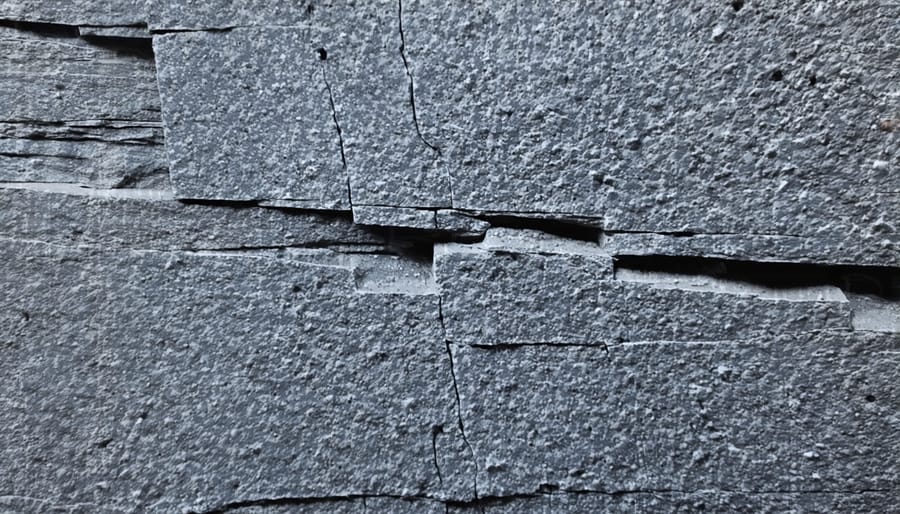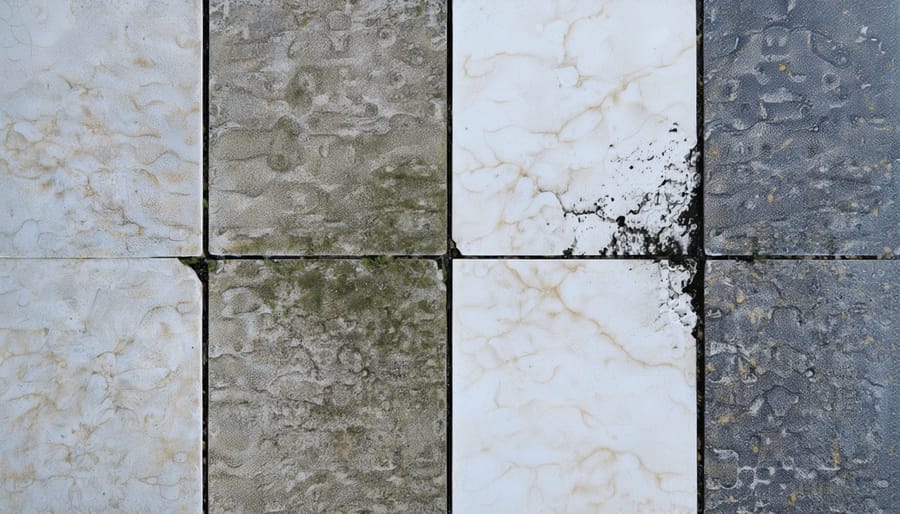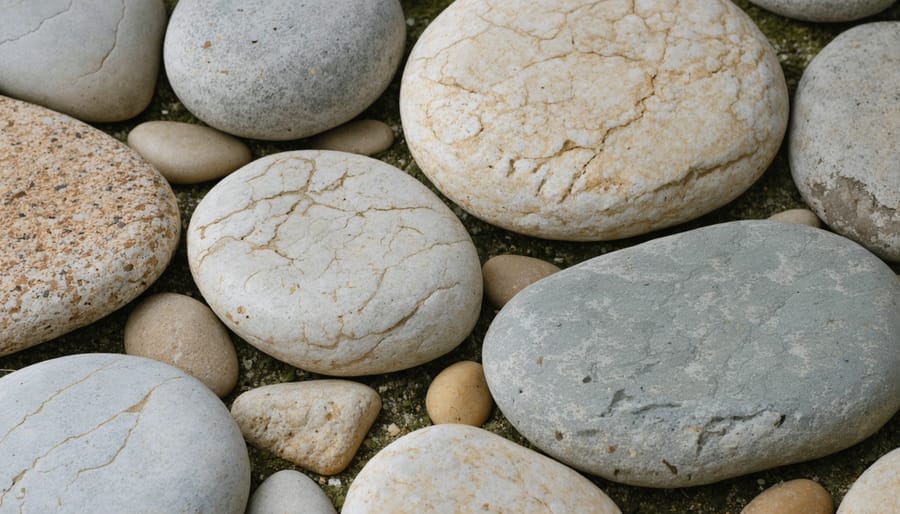Natural stone, while breathtakingly beautiful and historically revered, presents significant challenges that every property owner must carefully consider. From hidden structural weaknesses to potentially harmful mineral compositions, these geological marvels can harbor unexpected complications in both residential and commercial applications. Radon emissions from granite countertops, efflorescence in limestone installations, and susceptibility to acidic etching represent just a few of the critical concerns that deserve thorough examination before incorporation into any space.
The complexity of natural stone issues extends beyond mere aesthetic considerations, touching on health, maintenance, and long-term structural integrity. Understanding these challenges becomes particularly crucial when selecting materials for interior spaces where occupants spend considerable time. While natural stone remains one of the most sought-after building materials globally, its proper application requires careful consideration of environmental factors, chemical interactions, and specific use cases.
This comprehensive examination delves into the most pressing problems associated with natural stone installations, offering evidence-based insights for architects, designers, and homeowners. By understanding these potential pitfalls, stakeholders can make informed decisions that balance the timeless appeal of natural stone with practical considerations for health, safety, and longevity.
Natural Stone’s Impact on Indoor Air Quality
Porosity and Allergen Retention
Natural stone’s porous structure, while contributing to its unique character, can create challenges for individuals with allergies or respiratory sensitivities. The microscopic pores and tiny crevices in stones like limestone, travertine, and some granites can trap and harbor various allergens, including dust mites, pollen, pet dander, and mold spores. These particles become lodged within the stone’s surface, making them difficult to remove through routine cleaning.
The degree of allergen retention varies significantly depending on the stone type and finish. Highly polished surfaces typically trap fewer allergens than textured or honed finishes, which provide more surface area for particles to accumulate. In humid environments, these trapped allergens can combine with moisture, potentially creating an environment where mold and bacteria thrive.
To minimize allergen accumulation, regular maintenance using appropriate cleaning methods is essential. Proper sealing of natural stone surfaces can help reduce porosity and make cleaning more effective. However, even sealed stone requires vigilant upkeep to prevent allergen buildup, particularly in areas with high exposure to outdoor elements or in spaces frequented by pets.

Moisture and Mold Risks
Natural stone, while durable and beautiful, can sometimes create conditions that promote moisture retention and mold growth if not properly maintained or installed. Certain types of stone, particularly those with high porosity like limestone and sandstone, can absorb and retain moisture from the environment. This characteristic becomes particularly problematic in humid areas or spaces with poor ventilation, such as bathrooms and basements.
When moisture becomes trapped within or behind stone surfaces, it creates an ideal environment for mold development. The porous nature of some stones provides microscopic spaces where mold spores can settle and multiply, especially if the stone remains consistently damp. This issue is often exacerbated by improper sealing or inadequate waterproofing during installation.
To prevent moisture and mold issues, proper installation techniques, including appropriate backing materials and vapor barriers, are essential. Regular sealing of natural stone surfaces, especially in wet areas, helps create a protective barrier against moisture infiltration. Additionally, maintaining good ventilation and addressing any water leaks promptly can significantly reduce the risk of mold growth. If you notice dark spots, musty odors, or discoloration on your stone surfaces, it’s crucial to address these signs immediately to prevent further damage.
Chemical Sensitivities and Natural Stone
Sealant Reactions
Sealant reactions present a significant concern for sensitive individuals in what should be comfortable living environments. Many natural stone sealants contain volatile organic compounds (VOCs) that can trigger adverse reactions in some people. Common symptoms include headaches, respiratory irritation, and skin sensitivities, particularly during and immediately after application.
The severity of reactions varies depending on the specific sealant formulation and individual sensitivity levels. Solvent-based sealants typically cause more pronounced reactions compared to water-based alternatives. These reactions are usually temporary but can persist for several days or weeks if proper ventilation isn’t maintained during and after application.
To minimize potential reactions, homeowners should consider low-VOC or zero-VOC sealant options, which have become increasingly available in recent years. These environmentally friendly alternatives provide adequate protection while reducing the risk of adverse reactions. It’s also crucial to follow manufacturer guidelines regarding ventilation and curing times.
For extremely sensitive individuals, professional application services often have access to specialized sealants and proper ventilation equipment. Some manufacturers now offer hypoallergenic sealants specifically designed for individuals with chemical sensitivities, though these may require more frequent reapplication compared to traditional products.

Natural Stone Emissions
Natural stone, while generally safe, can emit various substances depending on its composition and origin. Granite, in particular, has garnered attention due to its potential for radon emissions. Radon is a naturally occurring radioactive gas that forms during the decay of uranium, which is present in small amounts in some granite varieties.
Limestone and marble may release trace amounts of volatile organic compounds (VOCs), though these emissions are typically minimal compared to synthetic building materials. Some metamorphic stones can contain asbestos-like minerals, which might be of concern if the stone is cut or damaged.
Testing has shown that most natural stone emissions fall well below safety thresholds established by environmental agencies. However, proper ventilation is always recommended in spaces with large stone installations. For those particularly sensitive to environmental factors, choosing stones with lower emission potential and having them tested before installation can provide peace of mind.
To minimize any potential risks:
– Request emission test certificates from suppliers
– Ensure proper sealing of stone surfaces
– Maintain adequate ventilation in enclosed spaces
– Choose stones from reputable quarries with documented safety records
– Consider regular air quality testing in spaces with extensive stone installations
It’s worth noting that natural stone emissions typically decrease over time, with the highest levels occurring immediately after installation. Most concerns can be effectively addressed through proper selection, installation, and maintenance practices.
Solutions for Hypoallergenic Stone Applications
Selecting Hypoallergenic Stone Types
When selecting natural stone for sensitive environments, certain varieties prove more suitable for individuals with allergies or respiratory concerns. Dense, non-porous stones like granite and quartzite naturally resist allergen accumulation and are easier to maintain in an allergy-friendly state. These materials have minimal surface porosity, making it difficult for dust, pollen, and other irritants to become trapped.
Polished marble and slate also present excellent hypoallergenic options when properly sealed. The smooth, sealed surface creates a barrier that prevents allergen absorption and simplifies regular cleaning. For those seeking innovative solutions, zeolite stone alternatives offer natural air-purifying properties that can actively contribute to better indoor air quality.
Consider these key factors when selecting hypoallergenic stone:
– Surface finish (polished surfaces tend to collect less dust)
– Sealing requirements and maintenance schedule
– Natural density and porosity ratings
– Installation location and exposure to allergens
– Cleaning compatibility with allergy-safe products
For optimal results, pair your stone selection with proper installation techniques and regular maintenance. Professional sealing should be performed according to manufacturer specifications, and cleaning should utilize non-toxic, hypoallergenic products specifically formulated for natural stone. This comprehensive approach ensures your stone surfaces contribute positively to indoor air quality while maintaining their natural beauty.
Maintenance Best Practices
Regular maintenance of natural stone surfaces is crucial for minimizing allergen accumulation and maintaining a healthy indoor environment. Start by implementing a daily cleaning routine using a microfiber mop or vacuum with a HEPA filter to remove dust and debris. For deeper cleaning, use pH-neutral stone cleaners specifically formulated for natural stone, avoiding acidic or abrasive products that could damage the surface.
Seal your natural stone surfaces annually or as recommended by the manufacturer to prevent moisture absorption and reduce the potential for mold growth. Pay special attention to grout lines, as these can harbor allergens and require periodic deep cleaning with appropriate stone-safe products.
In bathrooms and kitchens, address water spots and spills immediately to prevent mineral buildup and potential mold formation. Use exhaust fans to control humidity levels and ensure proper ventilation. For outdoor stone installations, regular pressure washing and removal of organic matter will prevent allergen accumulation in porous surfaces.
Consider professional cleaning services annually for thorough maintenance and to address any specific concerns related to allergen buildup or stone preservation.

Alternative Treatments and Sealants
For those sensitive to traditional stone sealants or treatments, several hypoallergenic alternatives have emerged in recent years. Water-based sealers offer excellent protection while minimizing chemical exposure and VOC emissions. These eco-friendly options maintain the impact of different stone types while ensuring a safer indoor environment.
Plant-based sealants derived from natural oils and resins provide another viable solution. These products create a protective barrier without compromising the stone’s natural properties or aesthetic appeal. Additionally, penetrating sealers with low toxicity formulations offer long-lasting protection while being gentler on sensitive individuals.
For maintenance, consider using pH-neutral cleaners specifically designed for natural stone. These alternatives avoid harsh chemicals that could trigger allergic reactions or respiratory issues. Some manufacturers now offer complete treatment systems that include both sealants and cleaning products developed specifically for chemically sensitive individuals.
Before applying any alternative treatment, always test on a small, inconspicuous area first. This helps ensure compatibility with your specific stone type and confirms there are no adverse reactions to the product.
Natural stone remains a premier choice for construction and design, but its proper management in allergy-sensitive environments requires careful consideration and proactive maintenance. Through understanding the potential challenges – from dust accumulation to moisture retention – property owners and designers can implement effective strategies to minimize health impacts while preserving the beauty and value of stone surfaces.
Regular cleaning with appropriate, non-toxic cleaners, proper sealing, and maintaining optimal indoor humidity levels form the cornerstone of responsible stone management. For those with severe allergies, selecting low-porosity stones like granite or quartzite can significantly reduce potential issues. Professional installation with proper ventilation systems and moisture barriers is equally crucial for long-term success.
When designing spaces for allergy-sensitive individuals, consider incorporating natural stone in areas with less direct contact or where maintenance is easily managed. Regular inspections for signs of moisture damage or deterioration help prevent the development of allergen-friendly environments. Working with certified stone professionals who understand these specific concerns ensures proper material selection and installation techniques.
By following these guidelines and maintaining vigilant care, natural stone can be safely and effectively used in most environments, including those occupied by allergy-sensitive individuals. The key lies in balancing the timeless appeal of natural stone with practical considerations for health and wellness, resulting in spaces that are both beautiful and comfortable for all occupants.










